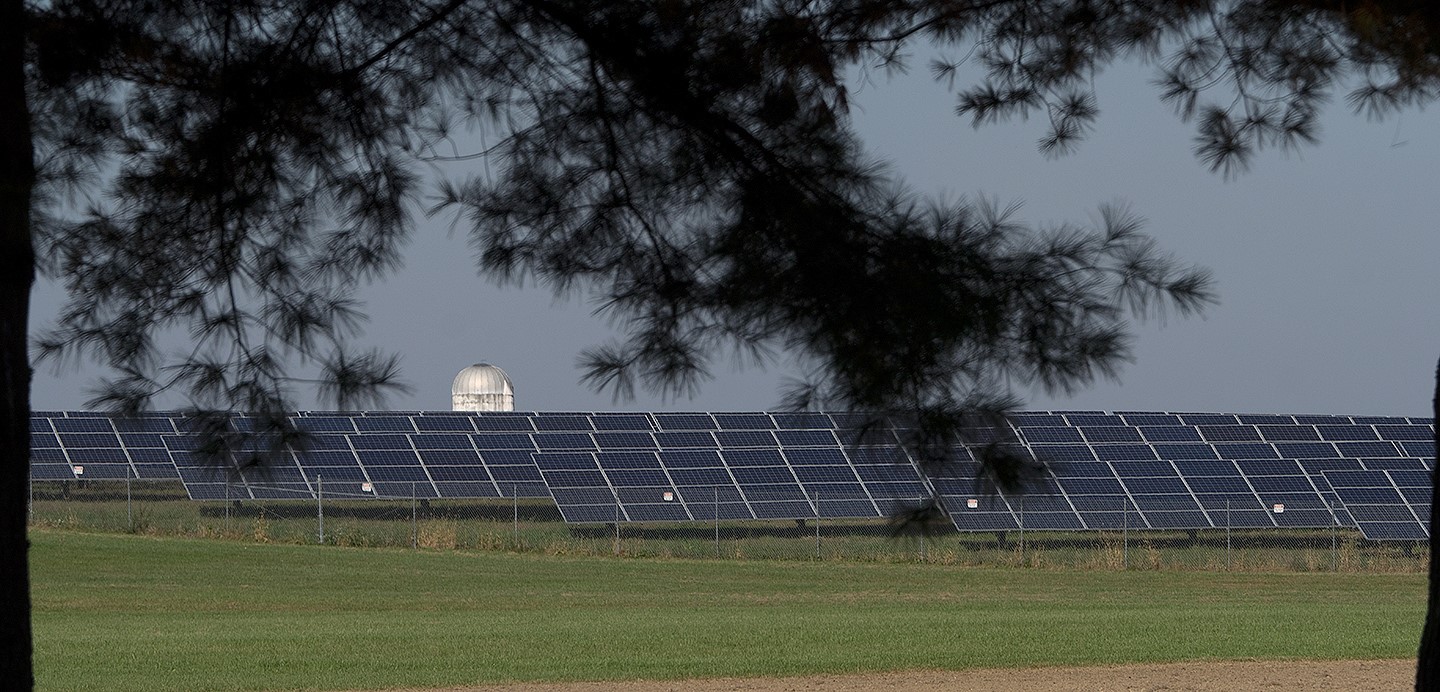From the President: The Eastern Shore’s Most Urgent Conservation Need in 2024

For 33 years, Eastern Shore Land Conservancy has welcomed each new year with a strong spirit of mission, to work each day to conserve this special place we all hold dear. This year is no different, as we return to the office after a restful break among family and friends.
We are proud of our accomplishments in 2023 and move ahead focused on the many opportunities to protect the Eastern Shore in 2024.
This particular new year dawns with an urgent issue on the horizon: the siting of commercial-scale solar on Eastern Shore farmland. As the General Assembly prepares for the 2024 legislative session, solar siting policy is a high priority for many, as the state seeks to meet aggressive renewable energy goals, while also continuing to make progress on land conservation.
Ground-mounted solar projects can run from a few dozen acres to several hundred, and across the Potomac in Virginia, some individual solar projects are slated to consume thousands of acres of farmland, forest, and open space. Some look to Maryland’s Eastern Shore and see similar possibilities, with acre after acre of generally flat agricultural land suited perfectly for solar energy generation.
But Eastern Shore Land Conservancy is encouraging state lawmakers to move ahead cautiously. The University of Maryland estimates that our state has lost about half of its agricultural land in the last 50 years, and the American Farmland Trust estimates that in the coming decades, Maryland will likely lose more than 100,000 additional acres.
While estimates vary widely, the legislated renewable energy goals that already exist seem likely to require between 10,000 and 20,000 acres of ground-mounted solar on agricultural fields. This doesn’t include the acreage that could be affected by expanded transmission lines, substations, and other energy grid infrastructure.
Given the state landscape, one can imagine the majority of those acres — and perhaps the vast majority — could fall on Eastern Shore farmland, unless steps to ensure regional equity are taken. This is why, as legislators prepare to gather and address the business of the state, ESLC is advocating for a few priority policies related to solar siting.
First, commercial solar development should never be allowed on state-held or co-held conservation easements. (ESLC led a recent letter on this issue, which you can read here.) Second, solar siting should be prioritized for the built environment. We shouldn’t be losing some of the most productive soil in the world while warehouses and parking lots go unutilized. Third, for every acre taken out of production for solar development, solar companies should be paying a mitigation fee to conserve lands via permanent easement elsewhere. Lastly, policies should be enacted to ensure Maryland’s Eastern Shore counties aren’t expected to bear a disproportionate burden of solar development in the coming years.
As we navigate the changing climate, the need to decarbonize our economy and transition to a renewable energy future is abundantly clear. But what is also abundantly clear is that climate change will make Eastern Shore food production even more globally important.
We should think long and hard before we place too much Eastern Shore farmland under a solar panel.